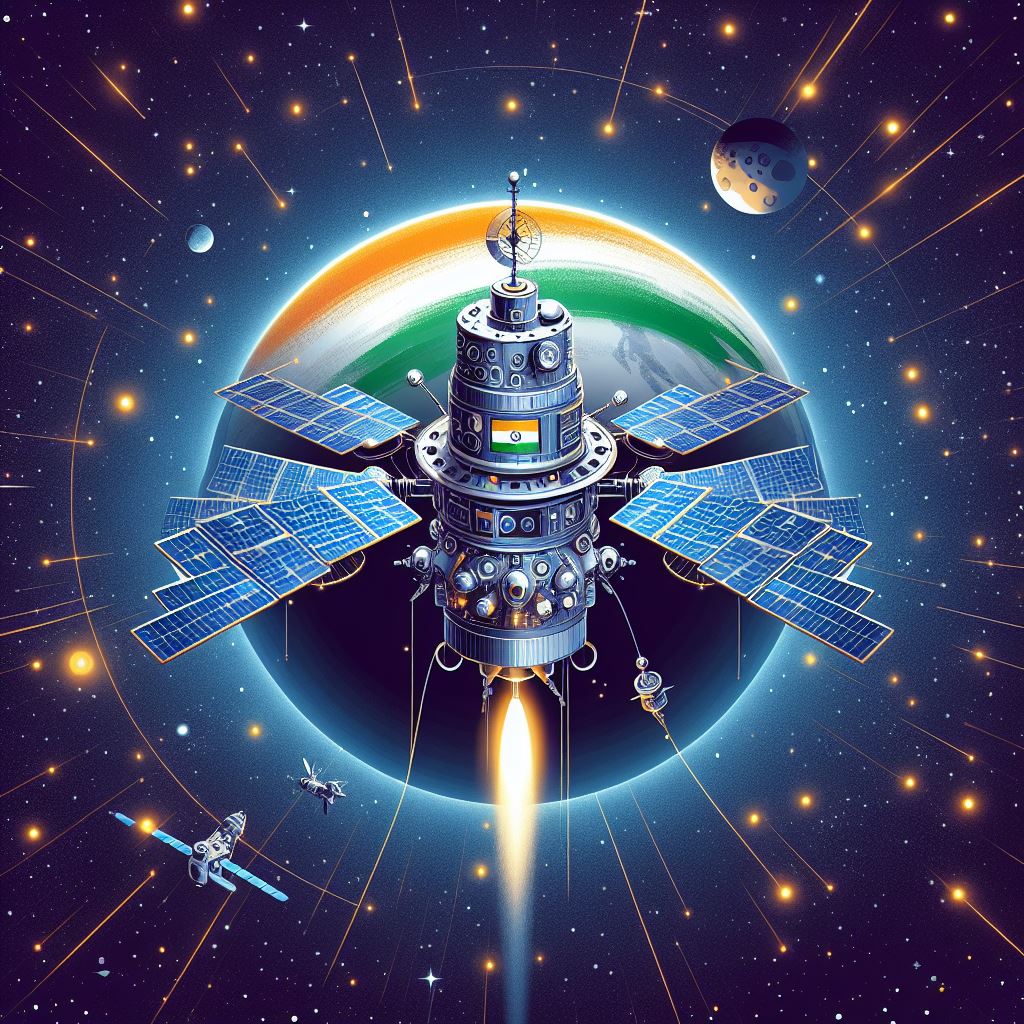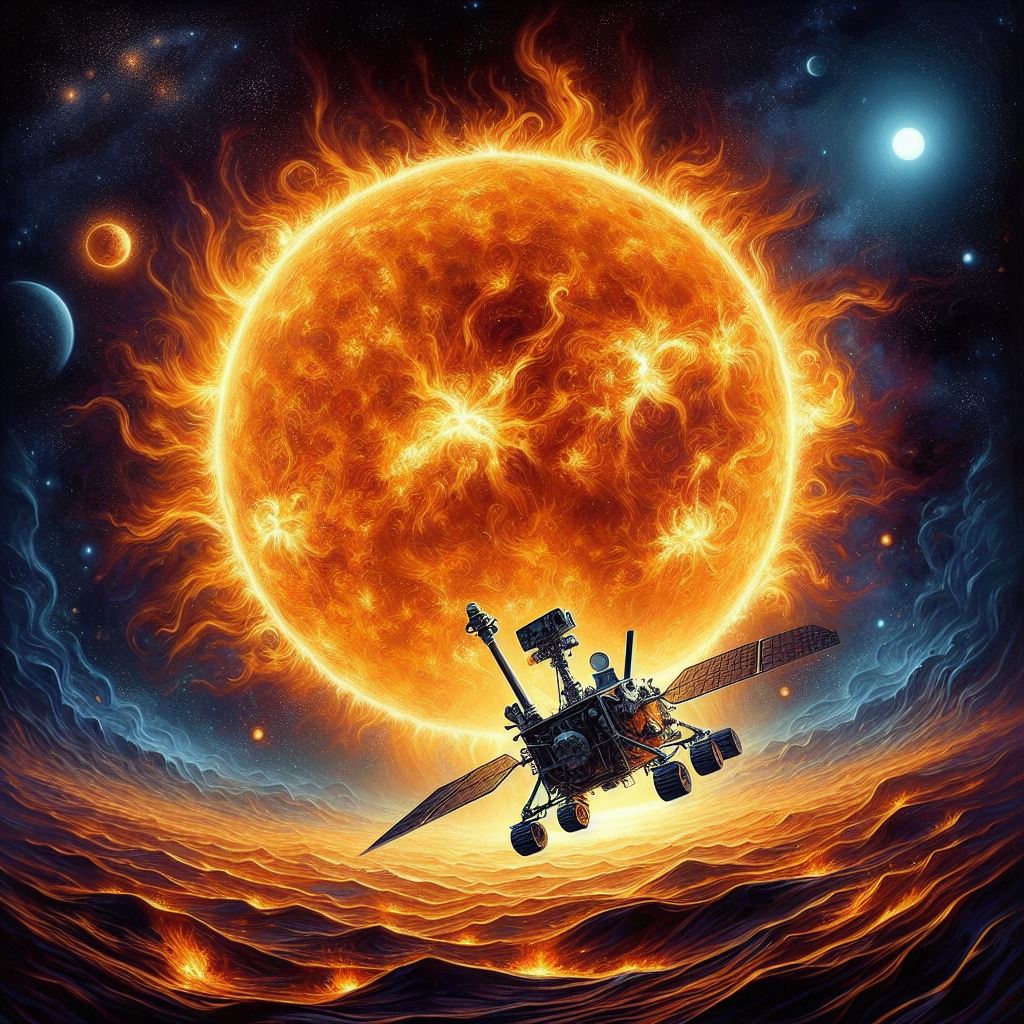Aditya-L1 Completes Journey – In Final Sun Orbit
ISRO has accomplished a significant feat by successfully guiding the Aditya-L1 spacecraft into its intended orbit.
Aditya-L1, India’s inaugural sun-focused observatory, has now reached its destination about 1.5 million kilometers away from Earth after completing its last maneuver.

This achievement marks a crucial step in studying the Sun from space.
This past Saturday, the Indian Space Research Organization (ISRO) accomplished a crucial milestone by flawlessly executing the final maneuver to position the Aditya-L1 spacecraft.
Aditya-L1 is India’s inaugural solar observatory designed to study the Sun, and it has now reached its designated orbit about 1.5 million kilometers away from Earth.
ALSO, READ / Aditya-L1 Mission: Will Reach L1 point On January 6, 2024…
Prime Minister Modi expressed his admiration for this significant achievement, considering it another noteworthy milestone for India.
He acknowledged the relentless commitment of the scientists involved in navigating the complexities of this space mission.
The successful placement of Aditya-L1 at its final destination signifies a remarkable accomplishment, and the Prime Minister commended the scientists for their dedication to advancing space exploration for the betterment of humanity.
From Moon exploration to Sun observation! What an extraordinary year for India! Guided by the visionary leadership of PM @narendramodi, Team #ISRO has triumphed once more. #AdityaL1 has successfully reached its designated orbit, poised to unravel the secrets of the Sun-Earth connection,” stated Jitendra Singh, MoS Science and Technology.
The Aditya-L1 mission has achieved a pivotal milestone with the successful execution of a crucial maneuver, placing the spacecraft into its designated orbit, specifically the Halo orbit incision.
This marks the transition from the cruise phase to the orbit phase of the mission, as explained by Annapurni Subramaniam, Director of the Indian Institute of Astrophysics.
Launched on September 2, the Aditya-L1 spacecraft utilized the Polar Satellite Launch Vehicle (PSLV-C57) from Sriharikota’s Satish Dhawan Space Centre.
Following a 63-minute and 20-second flight, the spacecraft entered an elliptical orbit measuring 235×19500 km around Earth. Afterwards, a series of maneuvers directed the spacecraft towards Sun-Earth Lagrange Point 1(L1), effectively escaping Earth’s gravitational influence.
With seven payloads on board, the spacecraft is equipped with electromagnetic, particle, and magnetic field detectors to observe the Sun’s photosphere, chromosphere, and outer layers (corona).
The unique vantage point at L1 allows four payloads to have a direct view of the Sun, while the remaining three conduct in-situ studies of particles and fields.
This configuration enables significant scientific investigations into the propagatory impact of solar dynamics in the interplanetary medium, according to the space agency.
The Aditya L1 payloads are expected to provide crucial information for understanding phenomena such as coronal heating, coronal mass ejections, pre-flare and flare activities, dynamics of space weather, and the propagation of particles and fields, as highlighted by officials.
The primary scientific goals of the Aditya-L1 mission encompass:
- Study of Solar Upper Atmospheric Dynamics: Investigating the dynamics of the solar upper atmosphere, including the chromosphere and corona.
- Chromospheric and Coronial Heating: Understanding the processes involved in chromospheric and coronal heating, exploring the physics of partially ionized plasma, and examining the initiation of coronal mass ejections and solar flares.
- In-situ Particle and Plasma Environment: Observing the particle and plasma environment in situ provides valuable data for studying the dynamics of particles originating from the Sun.
- Physics of Solar Corona and Heating Mechanisms: Investigating the physics underlying the solar corona and its heating mechanisms.
- Diagnostics of Coronal Plasma: Conducting diagnostics on the plasma in the coronal and coronal loops, including measurements of temperature, velocity, and density.
- Coronal Mass Ejections (CMEs): Examining the development, dynamics, and origin of coronal mass ejections.
- Solar Eruptive Events: Identifying the sequence of processes occurring at various layers (chromosphere, base, and extended corona) that lead to solar eruptive events.
- Magnetic Field Topology: Studying the magnetic field topology in the solar corona.
- Magnetic Field Measurements: Measuring the magnetic fields in the solar corona to understand their characteristics.
- Drivers for Space Weather: Investigating the origin, composition, and dynamics of solar wind as drivers for space weather.








